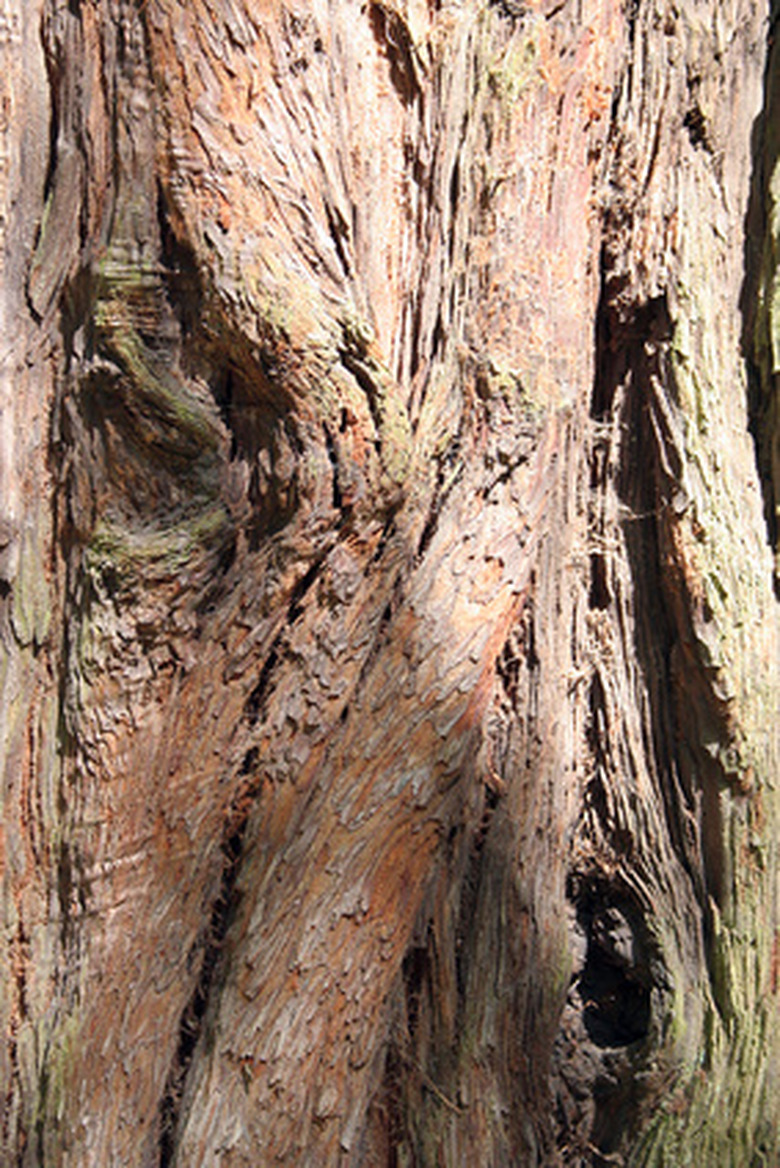How To Peel Cedar Bark Off A Tree
Peeled cedar posts or logs add a rustic effect in gardens, either as fencing or as borders for raised beds. Cedar also resists many types of fungus and insects, lasting for years without any chemical treatment. Removing the bark efficiently depends on the right tools and the right timing, since the bark slips easily in spring and early summer but locks tightly to the sapwood for the rest of the year.
Step 1
Cut cedar trees for peeled logs early in the spring and work them on the spot–the quicker the better, since bark sets to the wood in only a few days.
Step 2
Set the cedar logs or posts on log stands, which can be simple short sections of rough logs large enough to give a few inches of ground clearance.
Step 3
Drive a log dog–which looks like a large metal staple–into each end of the cedar post, with one prong of the log dogs in the post and the other prong in the log stand.
Step 4
Stand near the center of the log and face it. Place the cutting end of the bark spud–an over-sized chisel with a handle about 4 feet long–bevel up on the center of the log with the edge of the spud parallel to the log.
- Peeled cedar posts or logs add a rustic effect in gardens, either as fencing or as borders for raised beds.
- Cut cedar trees for peeled logs early in the spring and work them on the spot–the quicker the better, since bark sets to the wood in only a few days.
Step 5
Press nearly straight down. Use your body weight to force the bit through the bark and to the sapwood–feel the crunch when the bit breaks through.
Step 6
Reverse the bit of the spud in the same cut and press down again, this time with the bit bevel up. Lever the handle downward as you press the spud forward and the bit slips under the bark.
Step 7
Work the bit from side to side and open the bark layer along the length of the cedar log. Knock the log dogs loose to rotate the log and secure it in a new position to access the rest of the bark. Split sections loose with the spud if the loose bark gets in the way.
- Press nearly straight down.
- Lever the handle downward as you press the spud forward and the bit slips under the bark.
Step 8
Clean up any small bark pockets with the draw knife or the corner of the spud.
Tip
To use cedar bark for cordage without killing the tree, select a straight section of trunk and make two horizontal cuts with a knife at the bottom and top of the flawless area. Pull away the outer broken bark to get at the solid tan layer beneath. Pry a strip loose with a knife tip and pull it free of the tree. Weave and splice small strips together to make longer strands of rope.
Warning
Be very careful when working with a bark spud and don't put your feet in the way of the blade. Freshly peeled cedar is as slick as a bar of soap so expect some sudden shifts in balance as you work.
Things Needed
- Log stands
- Log dogs
- Mallet
- Draw knife
- Bark spud
